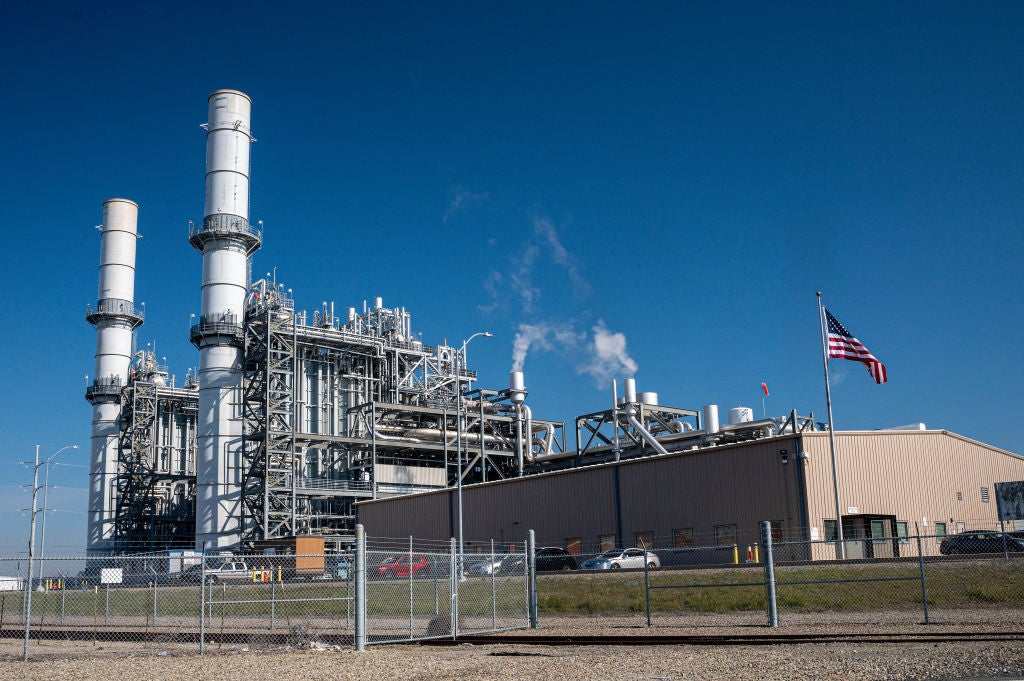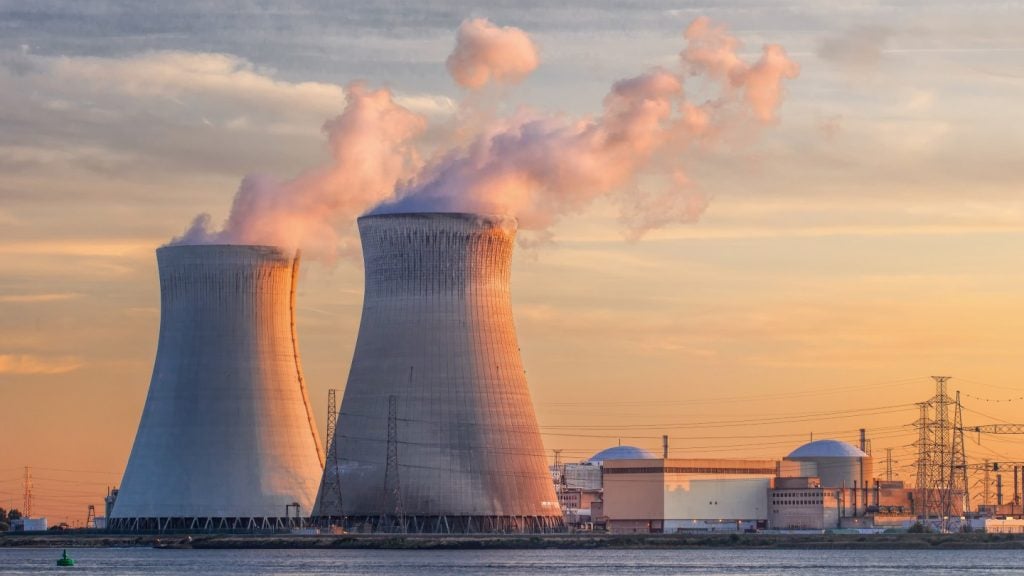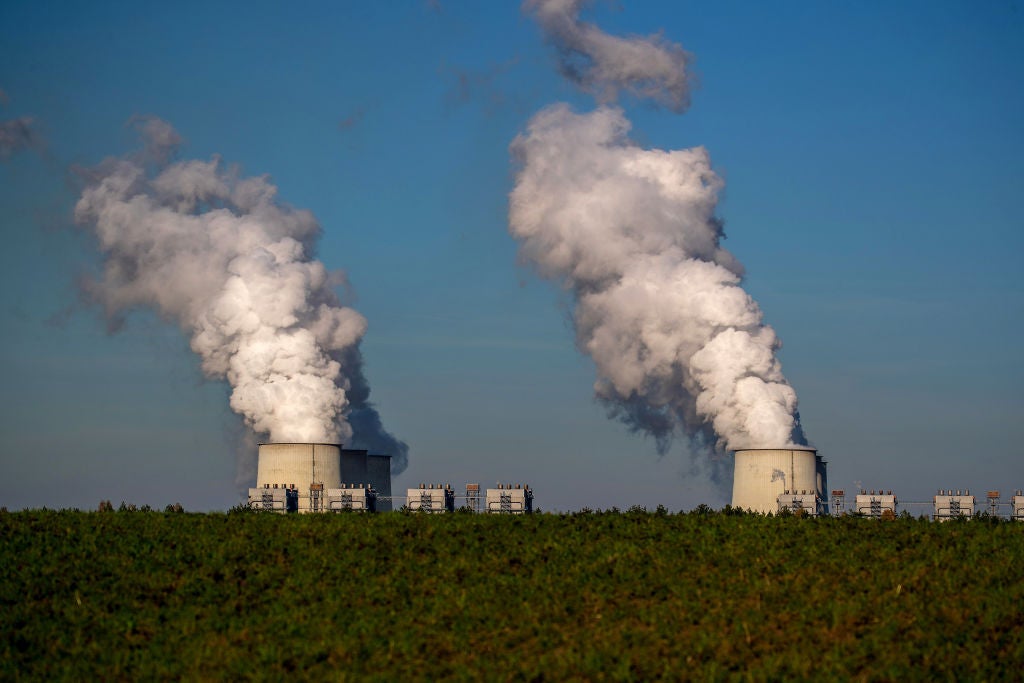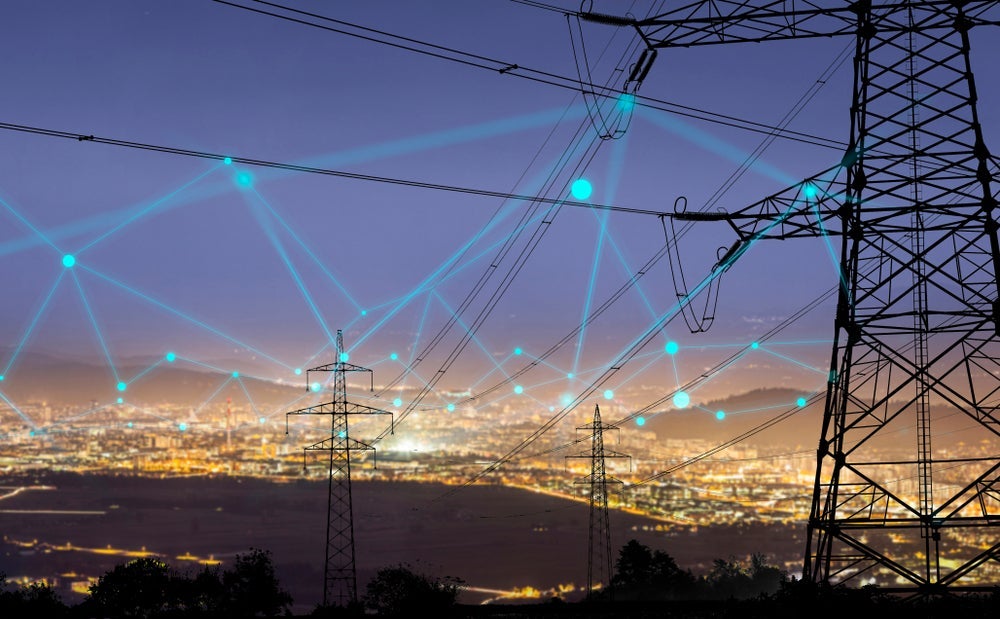
The past few years have seen ample warnings about the role of natural gas in our energy systems from both a climate and an energy security point of view. Nevertheless, a new data investigation from Energy Monitor shows that hundreds of gigawatts (GW) of new gas-fired power capacity are under construction or planned around the world.
The ever-diminishing global carbon budgets for both 1.5°C or 2°C warming mean many analysts believe gas can no longer be considered a ‘transition fuel’ away from dirtier fossil fuels like coal. In addition, since Russia invaded Ukraine two years ago, there is a new-found understanding among policymakers that being beholden to often-autocratic petrostates for gas supplies can compromise energy security.
Now, data shared by GlobalData, Energy Monitor’s parent company, reveals power sector plans that are out of sync with the requirements of net zero by 2050 and enhancing energy security.
There is 134GW of gas-fired power capacity under construction worldwide, which, for context, is only marginally smaller than both the national grid of Brazil (150GW) and the gas-fired power capacity constructed globally over the past five years (153GW).
Asia-Pacific, Europe, and the Middle East and Africa all have more gas-fired capacity under construction now (67GW, 18GW and 27GW, respectively) than was built over the past five years.
See Also:
There is a further 416GW of gas-fired capacity in the pipeline globally, including permitting, financed and announced plants. More than half of that is in Asia-Pacific.
How well do you really know your competitors?
Access the most comprehensive Company Profiles on the market, powered by GlobalData. Save hours of research. Gain competitive edge.

Thank you!
Your download email will arrive shortly
Not ready to buy yet? Download a free sample
We are confident about the unique quality of our Company Profiles. However, we want you to make the most beneficial decision for your business, so we offer a free sample that you can download by submitting the below form
By GlobalDataThis data contrasts sharply with the pathway laid out by the International Energy Agency (IEA) in its Net Zero Emissions Scenario, which shows gas demand declining by nearly 20% by 2030, and around 80% by 2050.
In response to Energy Monitor’s findings, Lorne Stockman, research director at the NGO Oil Change International, said: “There is no scenario in which we achieve the 1.5°C climate goal that allows for more gas-fired power plants.
“The science is clear: we need to phase out the supply and demand for oil, gas and coal, starting today. Rather than building new gas-fired power plants, we should be winding down the ones we have.”
Lisa Fischer, energy systems programme lead at the think tank E3G, adds: “Gas power is no longer necessary for most of the power needed in an energy system, with renewable energy, energy efficiency, batteries and interconnection a viable low-carbon solution.
“This [gas project] pipeline largely still exists because countries are not rolling out alternatives fast enough, either because access to capital is an issue, or they haven’t upgraded their energy systems to deal with more decentralised and flexible supply, or incumbent interests prevail.”
From an energy security standpoint, too, gas-fired power stations make little sense in countries such as those in Europe, or China, that will depend on imported gas, says Olivier Bois von Kursk at the International Institute for Sustainable Development.
“It is now cheaper and faster to deploy wind and solar capacity in most geographies, and these energy sources also provide local and reliable energy and are insulated from the wide volatility of gas markets”, Bois von Kursk told Energy Monitor. “Any country increasing its reliance on gas as a source of energy exposes itself to a volatile international market and wide fluctuations in energy costs.”
Seth Feaster, a US-based analyst at the Institute for Energy Economics and Financial Analysis, another think tank, adds that even in countries with significant domestic gas production like the US, there are energy security concerns.
“There are four serious risks associated with high gas dependence in the US for power,” he says. “One is fuel price volatility: as the US exports more LNG [liquefied natural gas], we appear to be increasingly importing the price volatility of a global market, much like oil.
“Another is short-term availability risks: as seen in recent winter cold snaps, the gas production and delivery markets and systems are not regulated in tandem with the power system, leading to unexpected supply shortages and price spikes that have had big impacts on electric ratepayers and utilities alike.
“Thirdly, there is long-term fuel supply risk: gas production is booming now, but that doesn’t mean the party will last forever, with particular concern for new power stations expected to last for decades into the future. “
Finally, concludes Feaster, there is the growing risk that gas pipelines will not get built due to public opposition, for both environmental and local control reasons. “Until very recently, power producers have taken new pipelines to their plants for granted. No more, and this alone is stalling or cancelling new gas plant plans,” he said.
The economic risks of gas-fired power plants
Not all of the 416GW of gas-fired capacity that is planned in the longer term is likely to be built.
“A large number of gas plants ‘in the pipeline’ are mirages,” said Feaster to Energy Monitor. Instead, renewables offer an increasingly strong economic case. In the US, says Feaster, the rate at which renewables are being installed – as well as the fact that there is significant gas-fired capacity retiring – means even if gas-fired capacity increases, its overall share in the electricity mix is holding steady.
Anne-Sophie Corbeau, from the Center on Global Energy Policy at Columbia University, notes that some gas capacity will likely be used to ensure security of supply in case renewables generation cannot keep up with demand. “In France, for example, we have just restarted a coal-fired plant because of the low temperatures in January – but prior to now it had not been used in a year,” she explains.
There is also a possibility that some of the gas-fired power capacity in the pipeline will be built but not used for its expected lifeline, posing the risk of stranded assets.
“Once construction begins and funds are committed, the focus shifts to maximising the project's operational lifespan: the primary economic goal then becomes to maintain operation for as long as the product can be sold at a price exceeding the marginal operating cost,” said Bois von Kursk.
Consumers could end up paying for gas-fired power stations to be shut down early in a scenario where plants’ expected lifelines go beyond decarbonisation deadlines.
“Infrastructure lock-in significantly contributes to higher climate mitigation costs in delayed action scenarios, as opposed to immediate implementation where no new fossil fuel infrastructure is built,” said Bois von Kursk.
Undeveloped low-carbon fuel technologies
Technology like carbon capture and storage (CCS), as well as alternative energy carriers like hydrogen, theoretically hold the possibility of decarbonising gas-fired power stations. However, commercial-scale 100% hydrogen turbines are not yet available on the market, while CCS technology remains uneconomical in most instances.
“So far, it [hydrogen] appears quite challenging to burn, too costly to produce, very difficult to store and ship via pipeline, and poses its own NOx [nitrogen oxides] pollution problems from combustion,” says Bois von Kursk.
Retrofitting gas-power plants and transport infrastructure for hydrogen poses structural challenges, he adds. This includes how to minimise leakage, since hydrogen molecules are much smaller than methane molecules.
“CCS and hydrogen will only add cost to gas-fired power plants,” concludes Stockman from Oil Change International. “[They] will make gas even less competitive against cheaper wind, solar and storage.”







